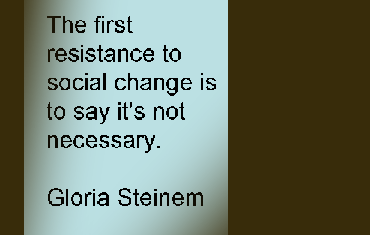Social Innovation and the Theory of Change

I just read an interesting article by Kathleen Kelly Janus on the Stanford Social Innovation Review. The title of the article is
Demystifying the Theory of Change Process: Why the process of creating a theory of change matters, and a five-step guide to success.
Here’s the link to the article.
SUMMARY:
The idea is that nonprofits should develop a theory of change articulation because they powerfully and efficiently explain why programs will lead to strong, measurable results. Developing a theory of change really is a means of assuring that your organization is actually doing the right things in the right ways and actually making a difference. The problem is that many organizations don’t do it well and many leaders struggle with the process. She gives five steps to help ensure that the process is successful.
MY COMMENTS ON MS. JANUS’ ARTICLE:
Your five points will be useful for social innovators because those five points help “grease the skids” of change and because humans resist change for many reasons.
Social innovation is mostly about doing things differently – disrupting the status quo – creating change to make things better. But big change means big resistance to the social innovator’s plan. That’s why a theory of change process is useful. It may help the social innovator grasp the reality of the resistance they will face.
Many social innovators cannot tolerate this backlash and so they compromise their plans to make small changes – incremental changes over time to disrupt the resistance to their goals. The bad news is there will be a corresponding small benefit to be garnered. Martin Luther King Jr. talked about the dangers of gradualism, especially for social change.
Social innovators who start revolutionary organizations do need to understand that their achievements will likely have a non-linear developmental arc. They will have a tendency to make people uncomfortable. This will happen even when the new paradigm is more useful than the old one. (Stanford has a great article on Thomas Kuhn that goes into depth on this: https://plato.stanford.edu/entries/thomas-kuhn/)
Because there is one thing for sure that all social innovators need to understand: Humans resist change even if it makes sense. Most of us cannot accept too much change right away; we wait and see what others think about it first. Or, we accept the social change in theory, but refuse to incorporate it because we do not see how the new paradigm will make our daily life better. Maybe it will cost too much effort. Maybe we’ll have to learn too many “new ways” and our lives are already full of other things that require attention.
This is why your five points are useful. They allow the social community to work together to battle the entrenched social habits. By working together, maybe a tipping point can be reached and it will ease the transition for all concerned.
The theory of change articulations will also illuminate the resistance the new revolutionary organization will face, because there will be hints of it exposed during the theory of change process. It will expose the personal power structure shifts, the new strategies, workloads, or knowledge bases that must be learned. It will expose where prestige will be lost and where criticism will fall. It exposes the areas that are not safe or comfortable.
The good news is there are ways to invent “inside the box” without falling back on gradualism. Your five points help social innovators prepare for entrenched resistance. That is so important.
As they create a road map for their internal and external stakeholders – experts, beneficiaries, donors, partners, and politicians – they will resist less and be more receptive to the changes events. This is what the new organization’s theory of change needs to address at a foundation level. The social innovator’s articulation of the change process needs to evolve in both a non-linear and linear path to move ahead so the bulk of their social community does not become disenfranchised.